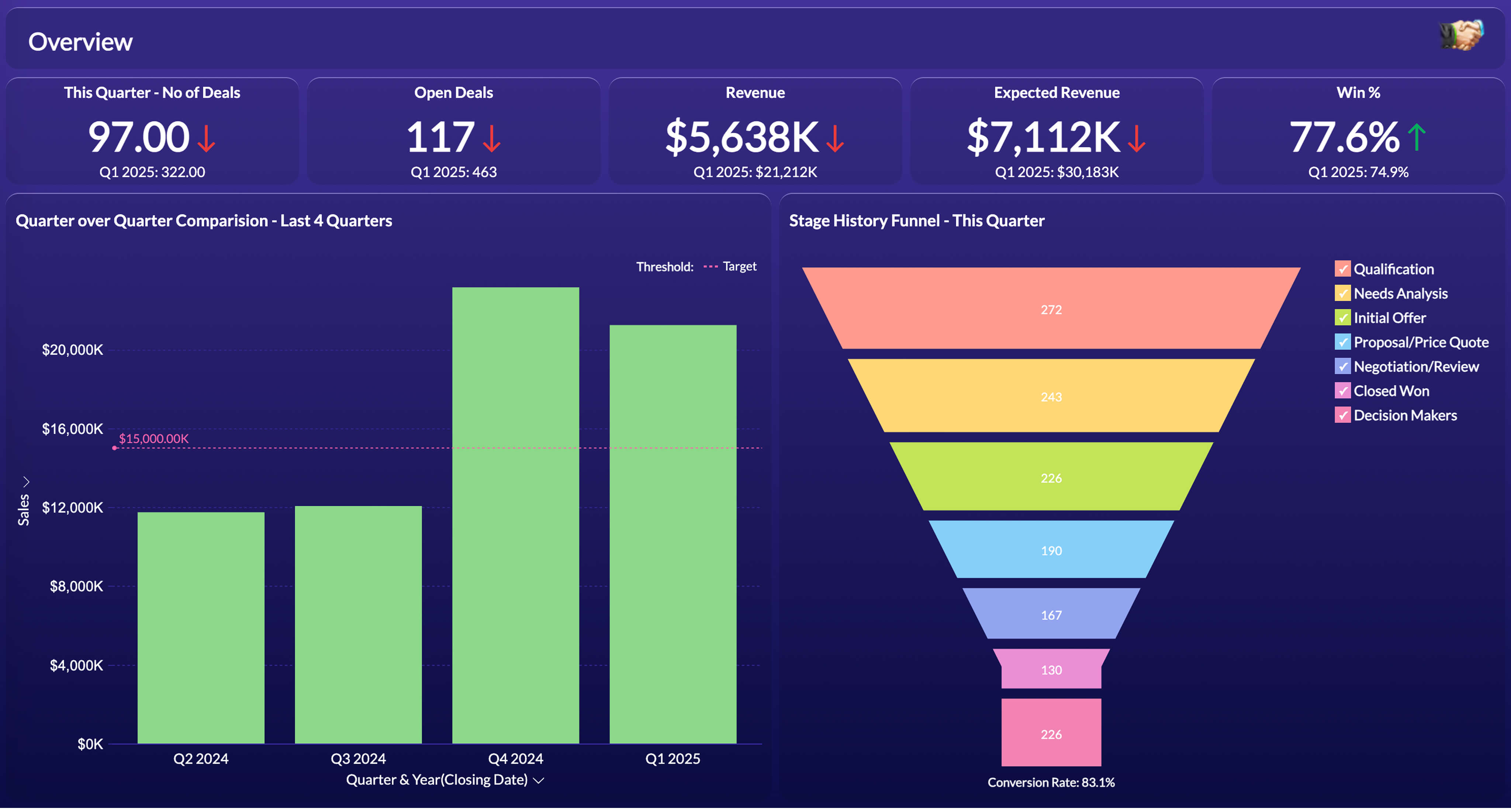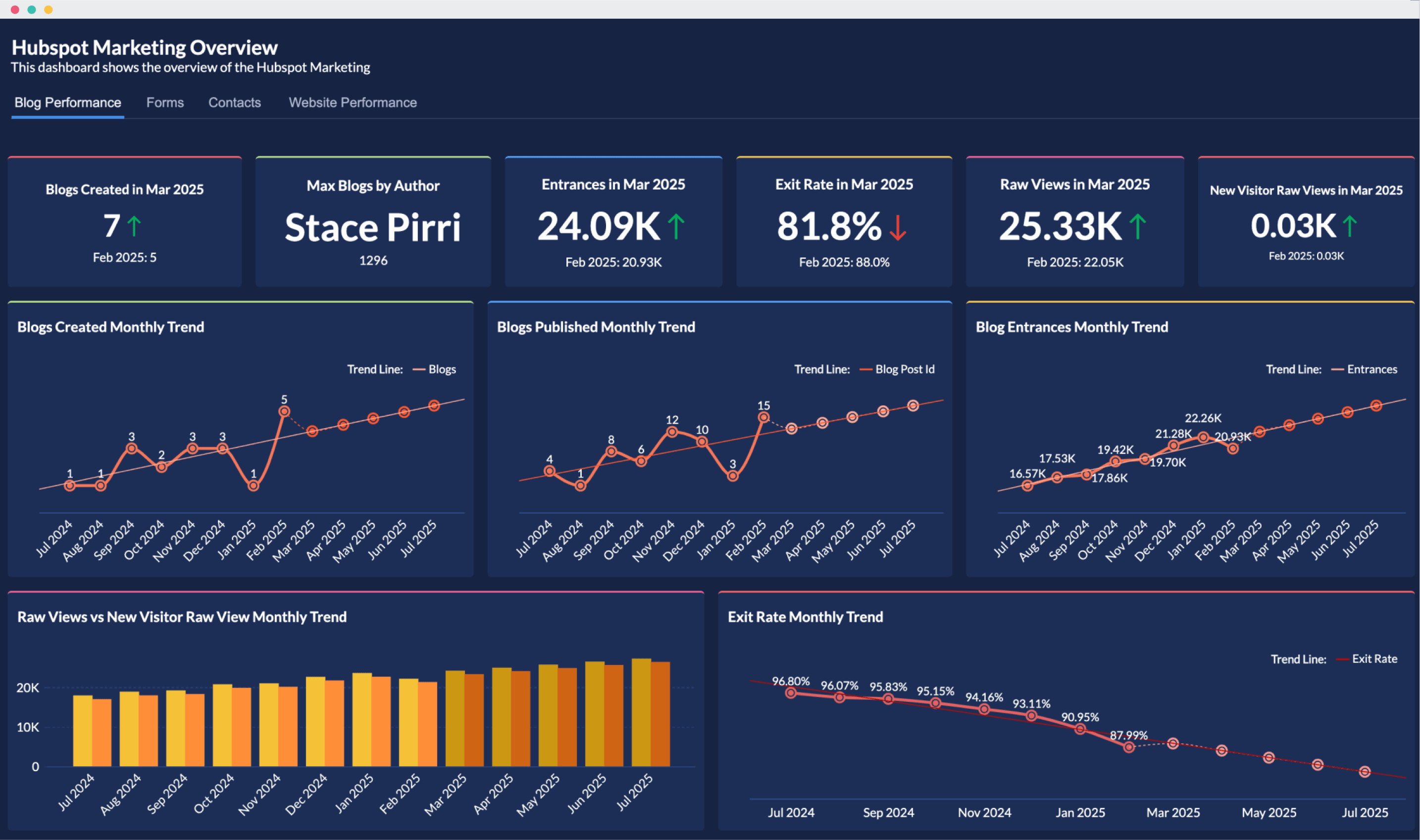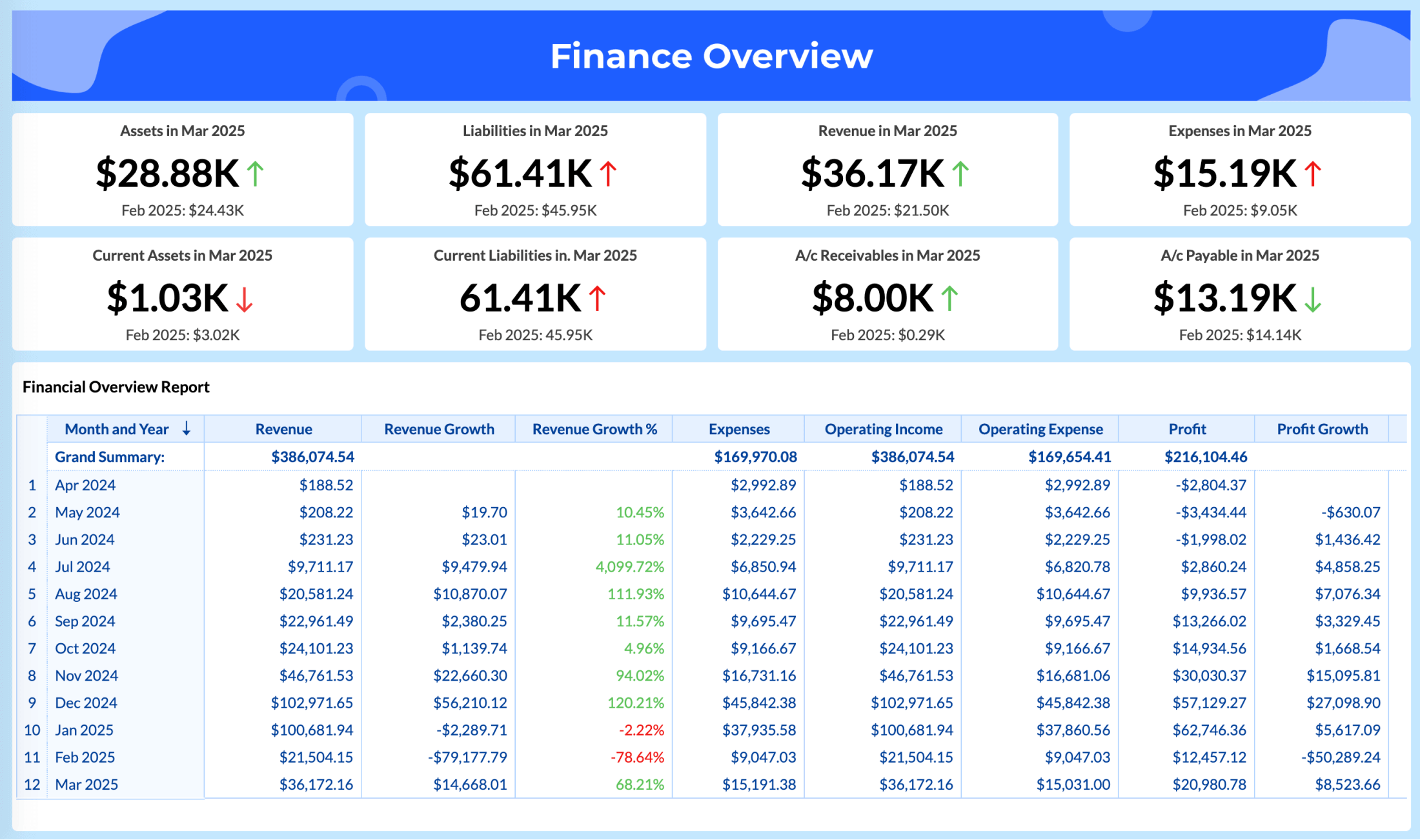What will I learn?
- What is a Key Performance Indicator (KPI)?
- Why are KPIs important?
- KPI vs Metrics
- What does KPI stand for in business?
- Why is it so important to select the right KPIs?
- How to choose the right KPIs for your team?
- Best practices while setting up KPIs for your organization
- Different types of KPIs
- What are KPI reports?
- How to create a KPI report?
- KPI Examples
- Benefits of KPIs
- Limitations of KPIs
- Why use a KPI Software
- Key Performance Indicators - FAQs
Key Performance Indicator (KPI)
What is a Key Performance Indicator (KPI)?
KPI stands for Key Performance Indicator. Key Performance Indicators(KPIs) are a measure of business performance benchmarked against set objectives and industry standards
Why are KPIs important?
KPIs are important to assess the achievement of objectives and results in a precise manner. The significance of KPIs can't be described better than the SMART (Specific, Measurable, Achievable, Reliant, Time-bound) model.
KPI vs Metrics
Considering the organizational planning pyramid, KPIs are suited for the strategic level where the measurement of specific goals, objectives, or milestones matters.
Whereas Metrics belong to the tactical or operational level where tracking the performance of individual activities or micro processes is paramount.
What does KPI stand for in business?
Key performance indicators(KPIs) are used by businesses to evaluate the outcomes of an organization at different levels (i.e) overall, departments/functions and specific teams/projects. They enable data-driven decision making by monitoring progress, tracking trends and identifying areas of improvement.
Why is it so important to select the right KPIs?
- To declutter information overload
- To measure progress and business health
- To understand and analyze patterns over time
- To solve problems in a time-bound manner
- To ensure continuity in strategic pursuit
How to choose the right KPIs for your team?
- Choose Key Performance Indicators(KPIs) that are directly linked to business goals/objectives.
- Based on your organization's stage of growth, assign weightage to KPIs
- Select the right mix of leading and lagging indicators based on current business scenario.
- Identify and eliminate vanity metrics across multiple business functions.
- Apply SMART (Specific, Measurable, Achievable, Reliant, Time-bound) as a thumb-rule for filtering KPIs.
Best practices while setting up KPIs for your organization
- Present KPIs as easily consumable dashboards/reports
- Standardize the reporting structure of KPIs at all levels
- Benchmark KPIs for effective performance measurement
- Ensure reliability of KPIs through veracity of data
- Revisit and redefine the KPIs periodically
Different types of KPIs
Though most of the KPIs are absolute numbers (quantitative), businesses do use qualitative KPIs like Customer Satisfaction, Employee Satisfaction etc.
Resource indicators - They are useful to measure the inputs/resources needed for time-bound projects or business processes. Examples include Project milestone completion, turnaround time (for customer support) or time-to-market (for product launch).
Outcome Indicators - They can track a process/project in the aspect of performance (like sales conversion) and time (e.g., duration of completion)
Departmental Indicators - They are useful to track the outcomes with respect to each department (e.g., sales, marketing, finance, HR etc) within a business.
Organization-wide Indicators - They can offer a bird's eye view of the overall business performance encompassing multiple domains, regions and market segments.
What are KPI reports?
Key performance indicator(KPI) reports are used to present key metrics that are relevant in tracking the progress towards an organization's goals and objectives.
Some of the key characteristics of KPI reports include:
- Quantifiable data that can be measured over time.
- Presentation of data using visual elements such as charts, graphs and tables
- Sufficient context and interpretation of data
- Designed for specific audiences like top-level executives, departmental heads (or) managers and frontline staff.
How to create a KPI report?
While creating a KPI report, it is essential to ensure that the report effectively communicates the required insights.
Here are few steps to guide with report creation:
- Define objectives: It is important to be clear about the purpose and goal of the report to be created.
- Identify relevant KPIs: Choose KPIs that are directly relevant to the scope of measurement. It is very vital to ensure that the metrics are Specific, measurable, achievable, relevant and time-bound(SMART).
- Establish baselines and targets: In order to provide context for performance evaluation, it is important to determine baseline values and desired targets for each metric.
- Use effective visualizations: Incorporate charts (or) graphs that'll present your insights in the best possible way.
- Ensuring accessibility/interactivity: Make your KPI reports easily accessible to the relevant stakeholders. Enable them to interact with the reports and also perform ad-hoc analysis.
KPI Examples
Sales
The KPIs for Sales involves monitoring the effectiveness of Sales Pipeline & outcomes of Sales Operations including Sales Team Performance

Marketing
KPIs are useful to understand the marketing impact in terms of audience engagement, conversion rates, and cost-effectiveness of various channels.

Finance
KPIs for tracking of financial performance include cash-flow, expenditure, revenue and profitability etc.

Benefits of KPIs
- Measure outcomes precisely and accurately
- To close gaps between set goals and actual performance
- Empower stakeholders in decision-making
Limitations of KPIs
- KPIs provide better value over longer duration of measurements
- KPIs aren't effective, without any follow-up actions
- KPIs may not exactly reflect the nuances of a journey (between two end-points)
Why use a KPI Software
A self-service BI & Analytics platform, also synonymous with a KPI software provides an easy-to-use drag-and-drop interface to create insightful reports and dashboards using a variety of data visualization options like charts, widgets, pivot, summary and tabular views etc.
Find out more on the capabilities that Zoho Analytics offers to be an
Key Performance Indicators - FAQs
What is KPI
KPI stands for Key Performance Indicator. KPIs are a measure of business performance benchmarked against set objectives and industry standards
What are the common KPI mistakes to watch out for?
- Selecting too many KPIs that results in information overload
- Choosing KPIs that don't align with primary business objectives
- Defining KPIs with insufficient data for benchmarking
What’s the difference between a KPI, a target, and a goal?
A Goal in a business context is synonymous with strategic objectives. Targets are milestones attained in the pursuit of a goal. KPIs are useful to measure the attainment of goals and milestones.
What’s the difference between leading and lagging indicators?
A leading indicator is predictive of future outcomes/performance. Whereas a lagging indicator presents what has already happened.
Liked what you have read? If you are in need of an analytics platform that enables effective creation of KPI dashboards , try out Zoho Analytics.
SIGN UP FOR FREE